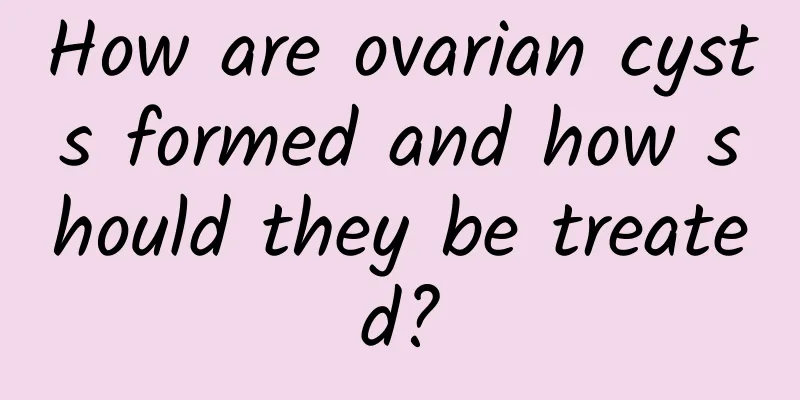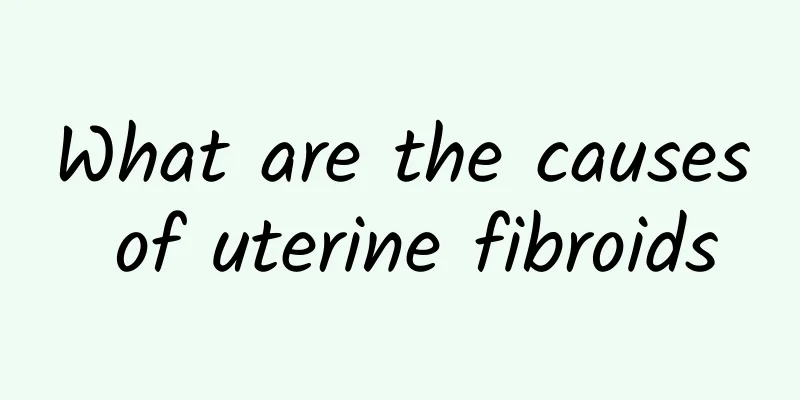How are ovarian cysts formed and how should they be treated?

|
There are many types of ovarian cysts, which can be divided into two categories: physiological and pathological. Physiological cysts are not real cysts and may disappear naturally over time. For example, an unruptured follicle may last for two or three cycles without rupturing and can be easily mistaken for an ovarian cyst. Another type is a corpus luteum cyst, which is a cyst formed when the corpus luteum does not disappear. Both do not require treatment and require observation for diagnosis. Pathological ovarian cysts can be divided into two categories, one is benign and the other is malignant. Benign pathological ovarian cysts include inflammatory cysts or chocolate cysts, tuberculous cysts, ectopic pregnancy cysts, etc. These cysts need to be treated with different methods. For example, inflammatory cysts form fluid accumulation in the fallopian tube or there are cysts in the adnexal area, forming inflammatory encapsulated fluid accumulation. If it affects pregnancy, surgical treatment is required; tuberculous cysts require anti-tuberculosis treatment; ectopic pregnancy cysts are more critical and should be treated surgically in time. The incidence of malignant cysts is relatively low, and the incidence in young women is usually less than 2%. Malignant ovarian cysts require comprehensive judgment through multiple means, and finally surgery is required to remove the cyst for pathological diagnosis. For different tumors, surgical treatment should be considered, and then necessary auxiliary measures should be taken to achieve the purpose of cure. Different cysts have different causes and different treatments are required for different causes. Once a woman develops an ovarian cyst, she should go to the hospital in time for treatment, and the doctor will evaluate and diagnose her and propose the correct treatment method. |
<<: Can eating durian relieve dysmenorrhea?
>>: There is very little leucorrhea after abortion
Recommend
How to treat postmenopausal adenomyosis
Adenomyosis often occurs between the ages of 35 a...
What are the treatments for cervicitis?
Cervicitis is one of the common gynecological dis...
What are the effective methods to prevent threatened abortion?
What are the effective ways to prevent threatened...
What is the type of vulvar leukoplakia?
Vulvar leukoplakia is also a common gynecological...
The clinical manifestations of irregular menstruation are mainly reflected in the following aspects
Irregular menstruation has been bothering women f...
Can I get pregnant if I have cervical erosion 3rd degree?
In recent years, the incidence of many gynecologi...
What are the common types of cervical warts?
What are the types of cervical warts? Cervical wa...
What should you pay attention to after a miscarriage?
What should you pay attention to after a miscarri...
The topic of low GI diet is very popular! What exactly is GI? A professor from the Department of Nutrition teaches you about the glycemic index of food
Changes in blood sugar levels after eating are an...
What should a 19-year-old girl do if her period is 13 days late?
What should a 19-year-old girl do if her period i...
What are the consequences of improper medical abortion? There are 7 major hazards
Many women may choose medical abortion. Although ...
Learn about some common symptoms of irregular menstruation
Irregular menstruation is a common gynecological ...
Daily care methods for dysmenorrhea
The main symptoms of dysmenorrhea are abdominal d...
What are the methods for checking pelvic inflammatory disease?
Among gynecological diseases, the most common one...
6 great fat-removing foods to reduce edema and help lose weight
The following 6 most fat-removing foods have natu...









